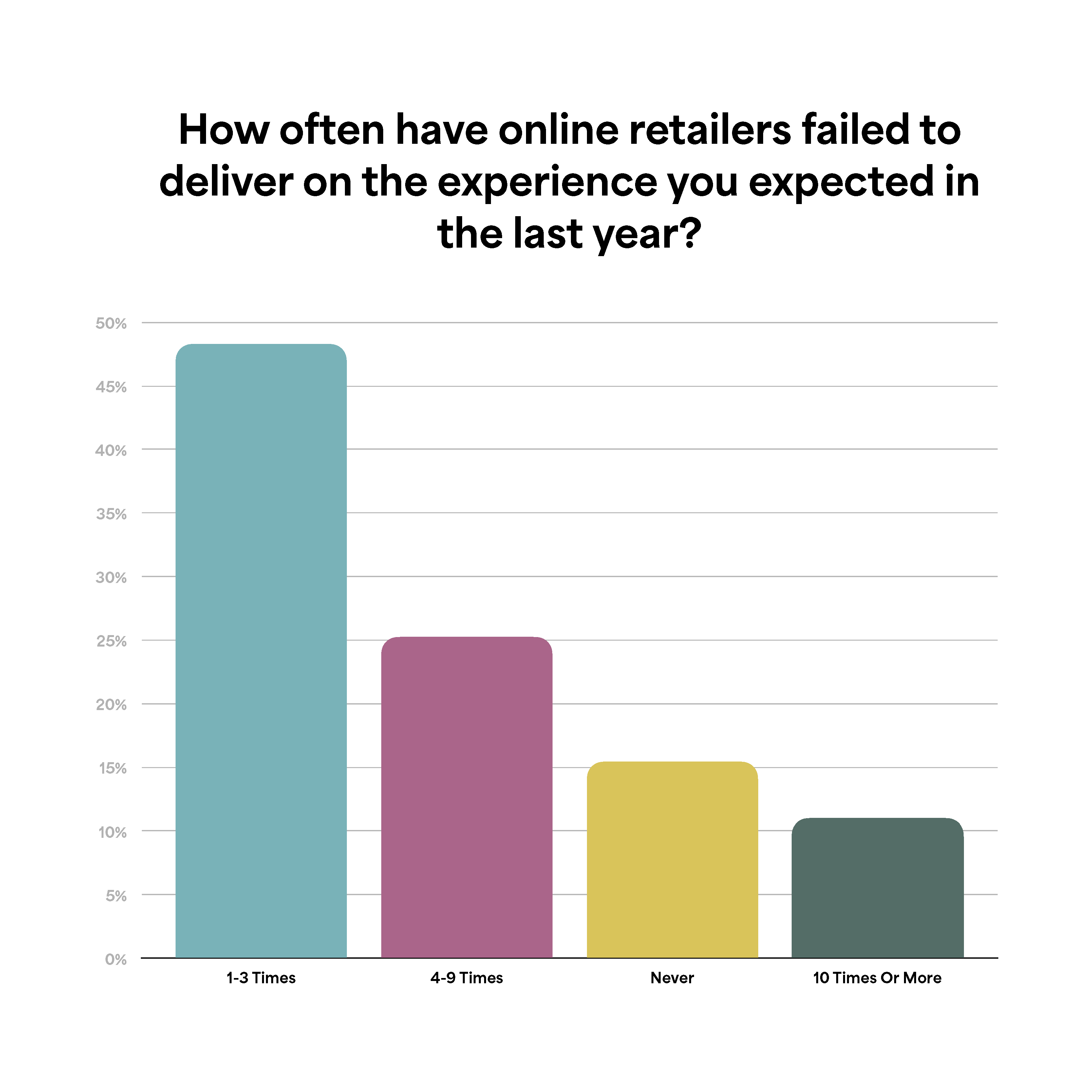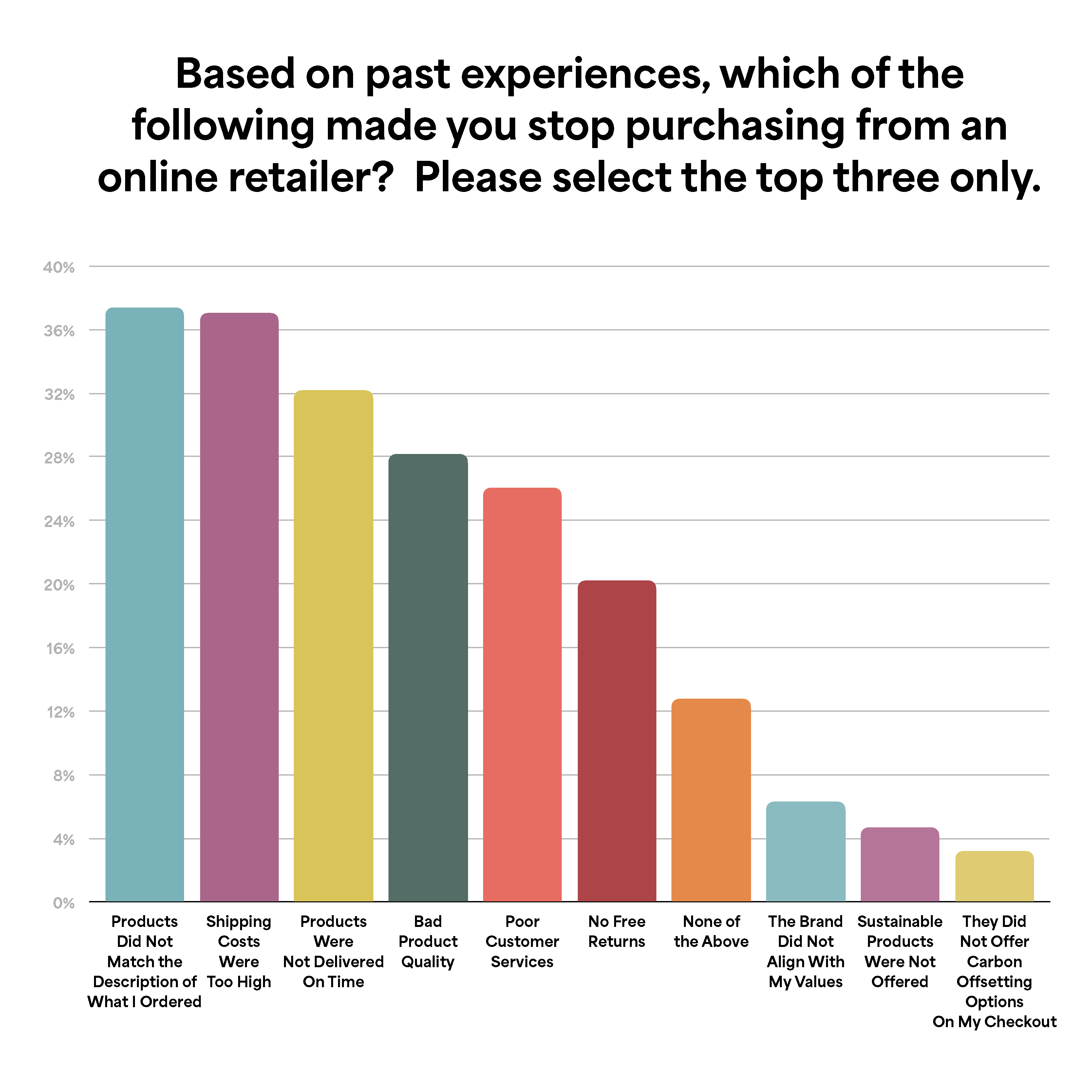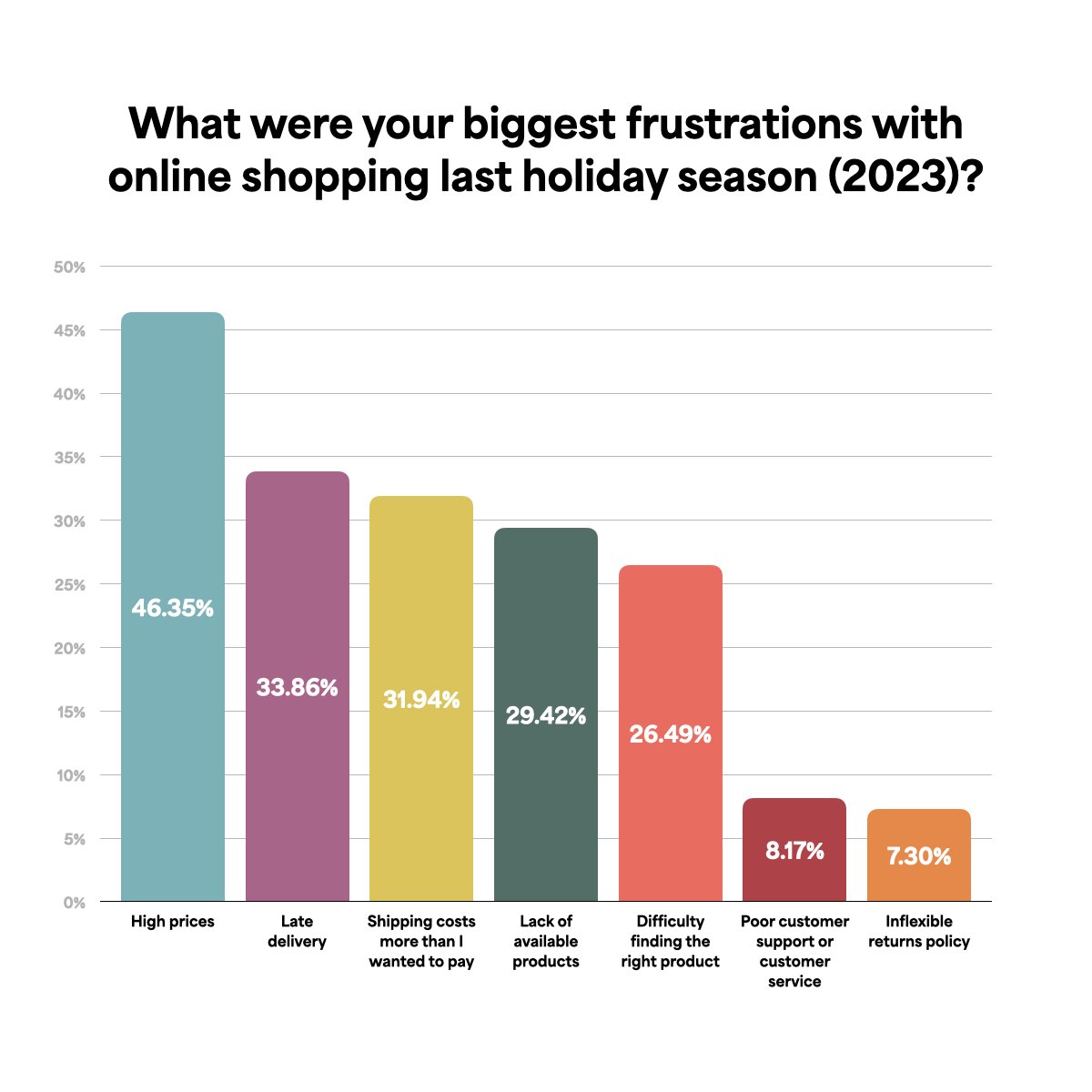Published Mar 18, 2024
Top 5 consumer trends reshaping ecommerce in 2024

- 85% of shoppers said online retailers failed to meet expectations last year.
- Consumers want fast shipping, diverse shopping channels, and personalization.
- Deliver excellence this holiday season and all-year long with integration.
Customer expectations are at an all-time high this year, and subpar operations won’t go unnoticed. You risk losing repeat buyers and damaging brand loyalty. In fact, 85% of shoppers said that online retailers failed to meet their expectations at least once last year. Make sure your business isn’t one of them. Create exceptional experiences for your customers with enhanced back-office integrations and omnichannel selling strategies.
To help you determine your customers’ preferences, Celigo conducted an independent global survey that received more than 1,500 responses. We asked consumers about their online shopping preferences, habits, and plans for 2024. Get ready to capitalize with these five tips.

1. Focus on omnichannel experiences
Consumers have different shopping habits depending on their demographics. To accommodate a variety of needs, you should adopt multiple channels for doing business. This is especially true if you are selling across generations. For example, 34% of Baby Boomers said they buy their products in physical retail stores while less than 8% of Gen Z make their purchases in-person.
But it’s not just where consumers buy that you should focus on. You also need to consider where they are researching your products. Social media was the most popular way with 60.76% using TikTok alone and 56.77% using any social media site. 22% of respondents used online marketplaces and 20% used brand sites to research products. The key to reaching customers in all of these segments is creating consistent and connected experiences across your channels.
To do so, it’s crucial to connect your channels and third-party platforms. This ensures that pricing and product information stay up to date across all channels. If you have physical locations, you will also need to connect your in-store POS and inventory systems to your online sales and service channels to make sure engagement happening in store can easily be continued online and vice versa.
2. Drive great customer experiences
Efficient operations play a vital role in cultivating customer satisfaction and fostering customer loyalty. Mistakes and delays caused by manual processes can lead to big problems for your business. 37% of respondents said they would stop buying from a retailer if they received a product that didn’t match the product description. They also cited late delivery, excessive shipping costs, and poor customer service as reasons they stopped buying from a retailer.
Investing in operational efficiencies will help you eliminate these mistakes and deliver your products quickly. To achieve this, you’ll need to integrate both your front and back end operations and automate manual processes. With integration you can provide accurate shipping dates and prices, automatically update product information with 100% accuracy, and instantly update inventory levels across your channels.

3. Get personal
Buyers today expect experiences to be tailored to their interests and needs. To capture their attention, your message needs to be targeted and relevant. Today’s market makes this even more critical. With consumers tightening their budgets, they’re looking for the best value on their purchases. 31% of respondents said that they’re shopping online to find better deals.
Connect all your systems to get the data you need to offer personalized messages, and determine what matters most to each customer. This will allow you to customize deals, and leverage automation to deliver these messages at scale. With integration, you can feed all that data to customer data platforms and develop curated journeys or promotions to encourage repurchasing.
4. Serve Gen Z
New research from Oxford Economics found that Gen Z’s purchasing power is expected to reach $2 trillion in the next ten years. If you’re not reaching this demographic, you’re missing out.
Social channels have become the go-to for younger generations to research items they are interested in. 40% of Gen Z survey respondents said they rely on social media and Tik Tok for product research. This generation is also still relying on Google and other search engines with 58% using these technologies for price information gathering.
If your product information isn’t up to date across social media and search engines, you could lose key buyers. Leverage integration to ensure smooth experiences from discovery to purchase.

5. Start planning for holiday 2024
Consumers are ready for this holiday season, and despite economic uncertainty, 30% of respondents are planning to spend more on online shopping than they did last year. On top of that, 52% of respondents stated that online shopping was a more convenient way to find and purchase gifts.
Don’t waste your opportunity to capitalize this holiday season because of inefficient operations. Prepare your operations now and handle the increased order volume with ease. If you do, your customers will notice. This year, consumers are looking for visibility into shipping dates, fast shipping, payment options, and pick-up in-store options.
Ensure you can deliver by automating every repeatable business process impacting shopper experiences. Consider implementing an iPaaS (Integration Platform as a Service) to achieve ecommerce excellence by eliminating data silos across systems.
Want to dive deeper into these results? Download the report today.




